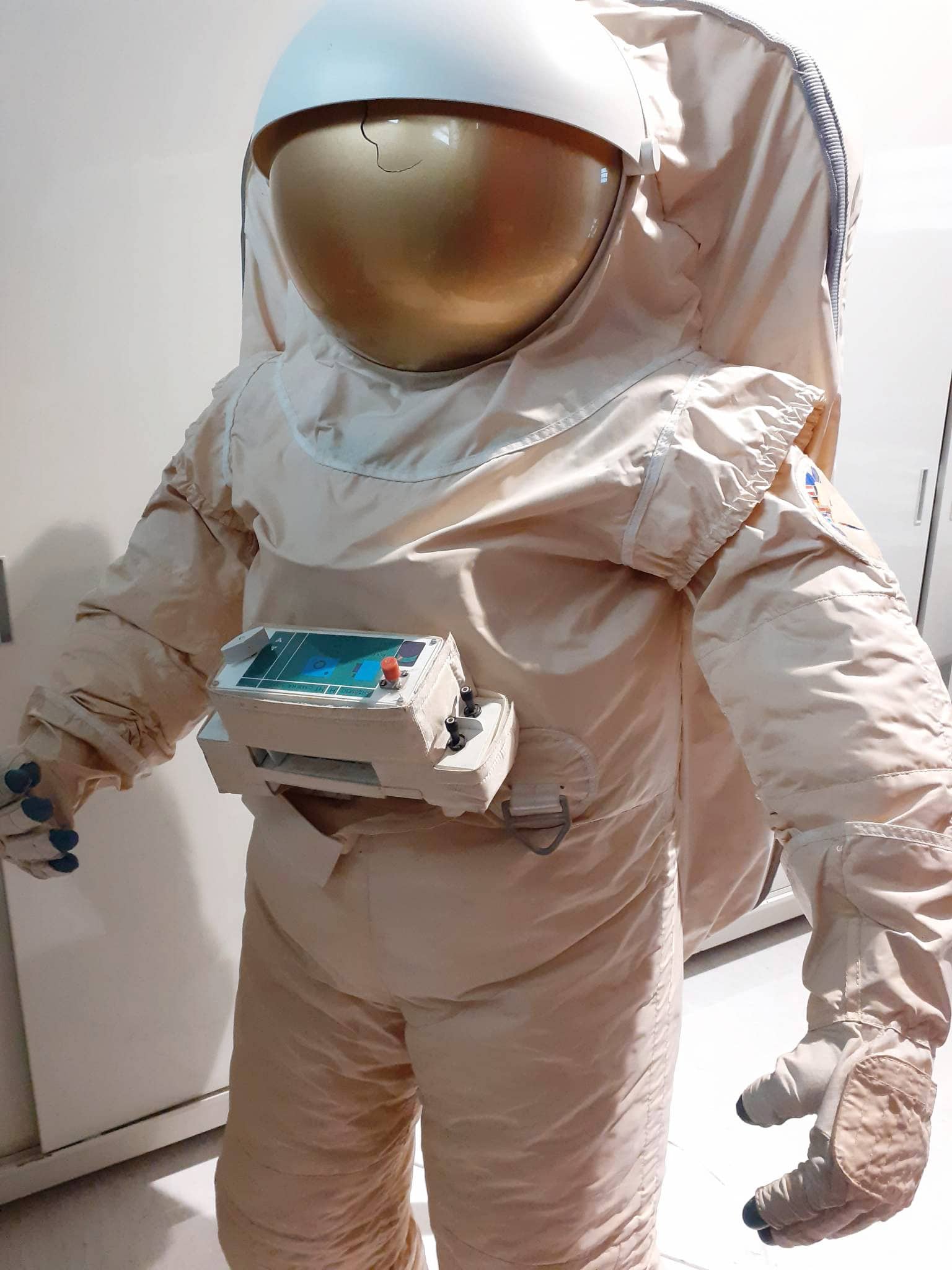Did you know that 9 June is International Archives Day? This date was chosen in 2007 to commemorate the date on which the International Council for Archives was created, under the auspices of UNESCO, in 1948.
Since 2019, it has become part of the ICA’s International Archives Week, where professionals in the archival community from around the world come together to promote the role of archives for accountability, transparency, democracy, heritage, memory and society.
To celebrate this week, and to play our part in raising awareness of the importance of archival preservation and access, we have taken the opportunity to investigate a rather special object held in the European Centre for Space Records. The story of Wilfried, our Archives’ mascot, begins with the production of a prototype spacesuit, but also perfectly encapsulates the role of Archives in safeguarding our sometimes fragile heritage and telling its stories.
Developing a European space suit
The first ESA astronauts carried out spacewalks (extra-vehicular activity or EVA) using the space suits of their international partners. However, in the 1980s, ESA began feasibility studies for the development of a European space suit. And that’s where the research we carried out to piece together this story begins…
One of the first protypes was produced in 1987 by the German aerospace company Dornier, under contract to ESA. Called ESSS (Extra-vehicular Space Suit System), it was designed for the European component of Space Station Freedom and crew members of ESA’s planned Hermes spaceplane. With the cancellation of the Hermes programme in 1992 by ESA and the transformation of Space Station Freedom into the International Space Station, ESA re-evaluated the ESSS programme, which became an international collaboration called EVA Space Suit 2000. The resulting hard-shell-torso prototype of the EVA suit, is on show in ESTEC and featured in ESA ESTEC in 99 Objects. But while the suit performed well in testing, the project did not progress further and the other partners in the ISS opted to upgrade their own space suits over continued development of a common space suit system.
Rubbish bin to ECSR stack
We believe that at some time during this process a copy of a prototype Dornier space suit arrived in ESTEC, ESA’s technical centre in Noordwijk. We don’t know how or when, and so can’t be sure whether the suit belongs to the ESSS or EVA 2000 project. In fact, we pick up the narrative only in the 2000s when ESRIN’s Head of Facilities Management, Roberto Franciosi, was on a mission to ESTEC. He was leaving the site and heading towards the airport when he spotted a foot coming out of a rubbish bin. He immediately stopped the car, not caring that he was going to miss his flight and called the site Facility Manager. Thankfully, what they discovered turned out to be no more sinister that this EVA suit!
A team effort between Facilities Management and the ESA Archives ensured that the suit was rescued, sent to the recently established European Centre for Space Records in ESRIN and accessioned into the Archives where it would be kept safe. At that time, the ESA Archives Manager was conducting a rather lonely vigil sorting through Envisat documents. (The ECSR had been created in late 2002 and the first major consignments of technical documentation from ESTEC was the Envisat collection – even today it is still the largest collection in the ECSR). During long, dark, winter hours spent in the stack, resolving emergency requests for documents, the new astronaut arrival kept him company, and offered a listening ear, becoming the ECSR’s mascot in the process. Since it’s hard to talk to someone without a name, the Archives team began to call him ‘Wilfried’, taking inspiration from the characters created by the celebrated French cartoonist Claire Bretecher.
In a fitting conclusion to Wilfried’s journey, he has also had the honour of being ‘adopted’ by four of ESA’s real astronauts. Frank De Winne, Paolo Nespoli, Luca Parmitano and Thomas Pesquet have all signed the back of his life-support system pack on various visits to the ESA Archives.
Digitised and valorised
Today, Wilfried continues to watch over the ECSR’s stack in his physical capacity. With changing times, he’s also been transformed into an avatar, representing the ESA Historical Archives in the digital world too (where he floats in the stack with a document from the Envisat collection, in recognition of his support for this mission). A perfect metaphor for the role of archives in preserving our physical past using today’s digital tools.
This all brings to mind the old saying about one person’s trash being another’s treasure. Our Archives team, however, prefers to think that the passing of time reveals the true value of even the most mundane material heritage, handed down from the past and entrusted to us.





